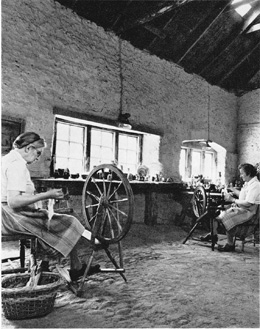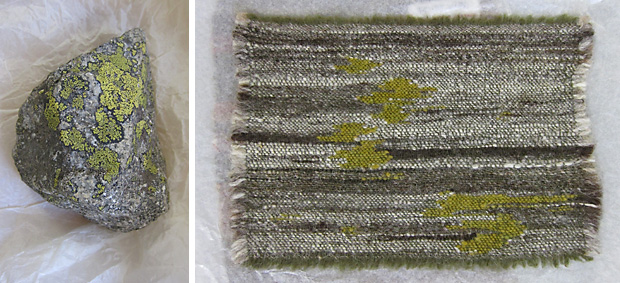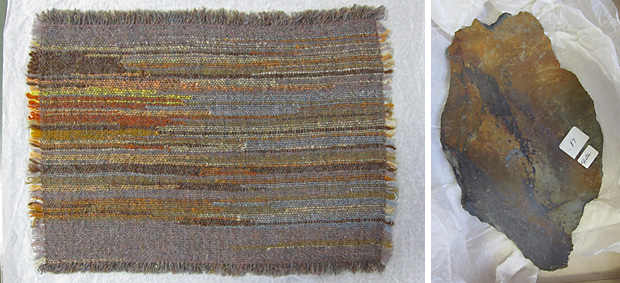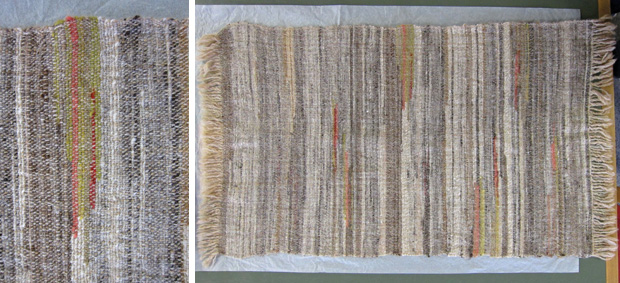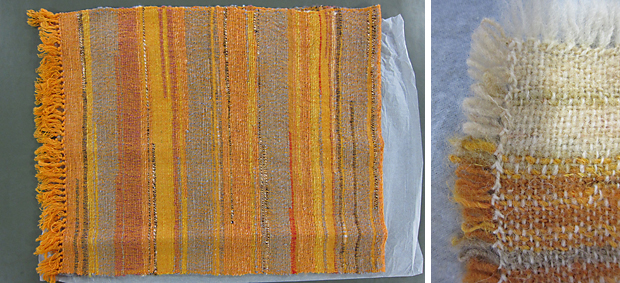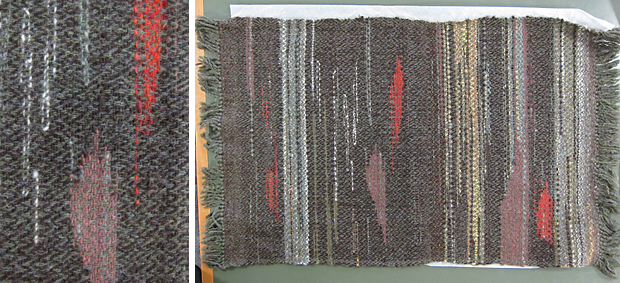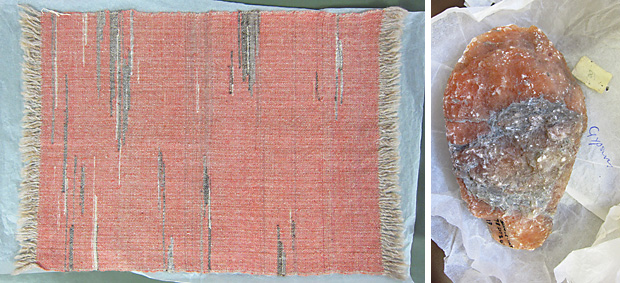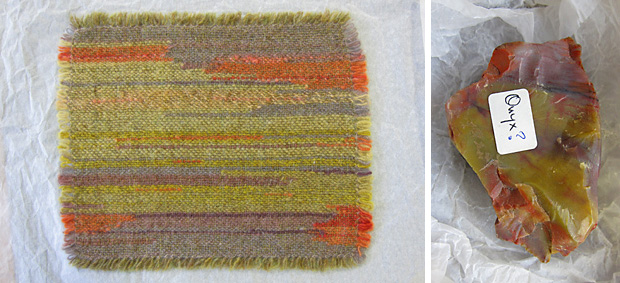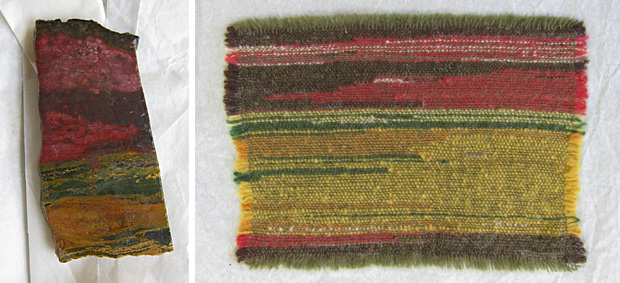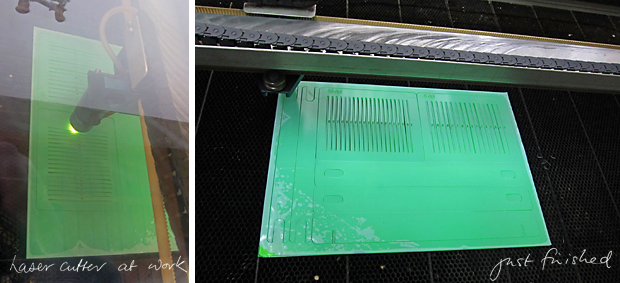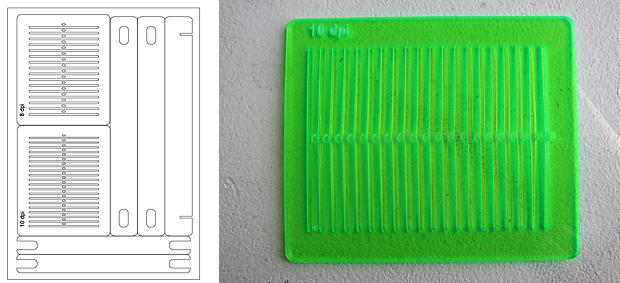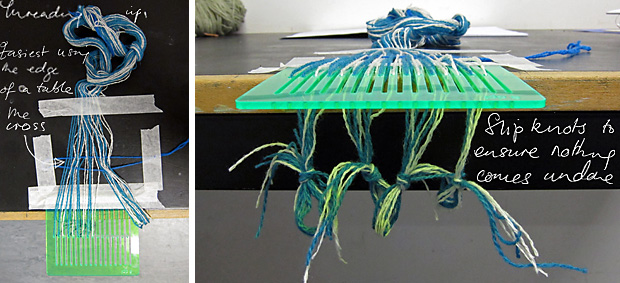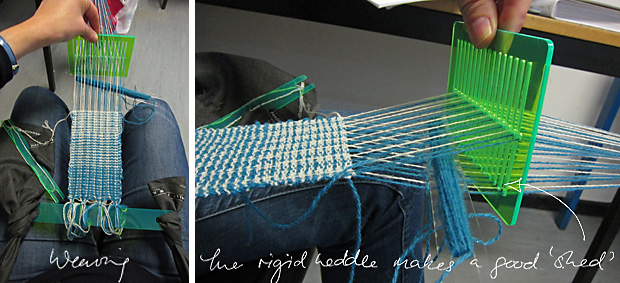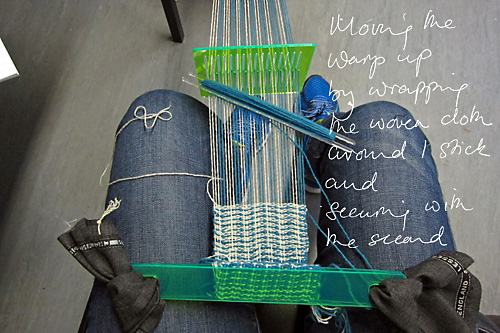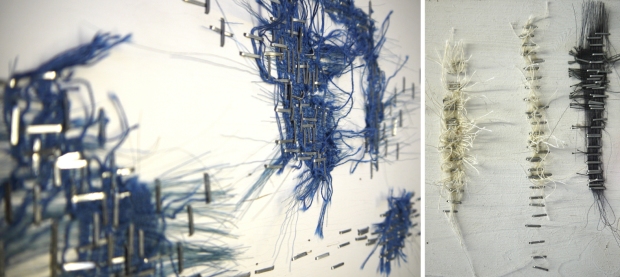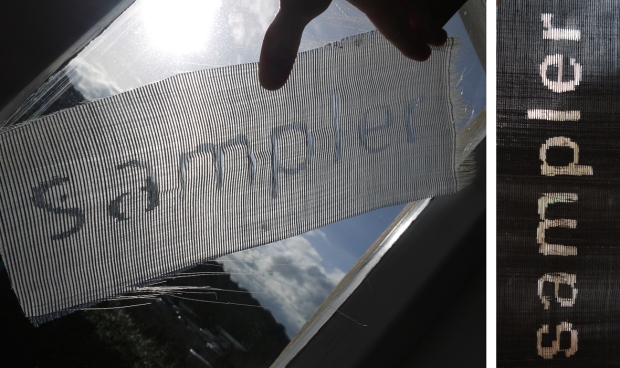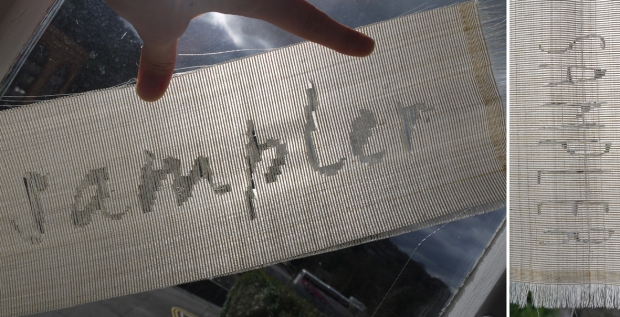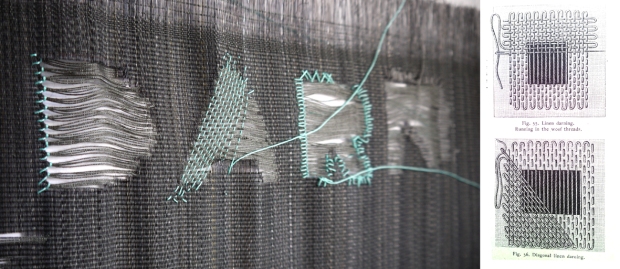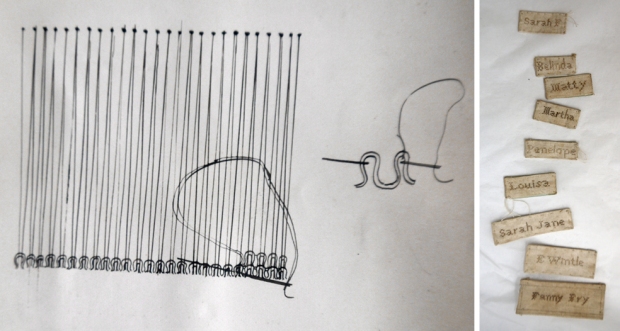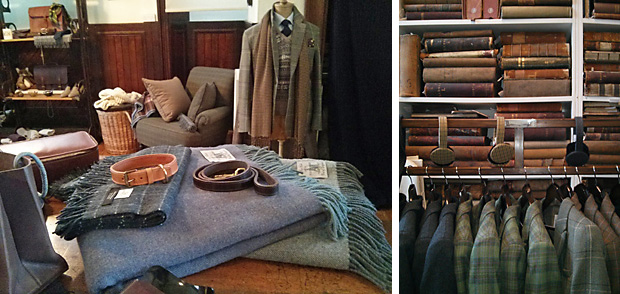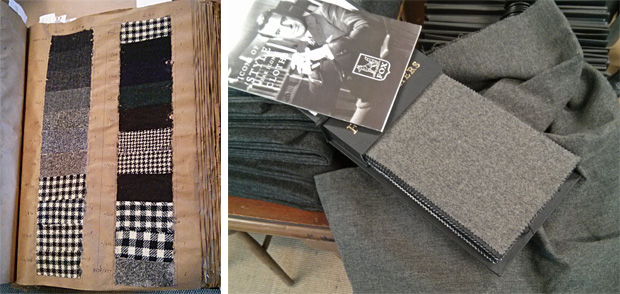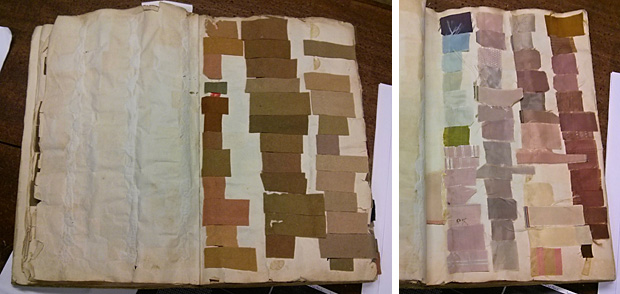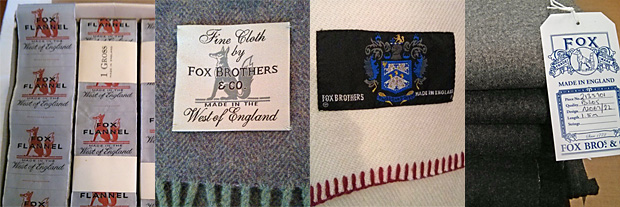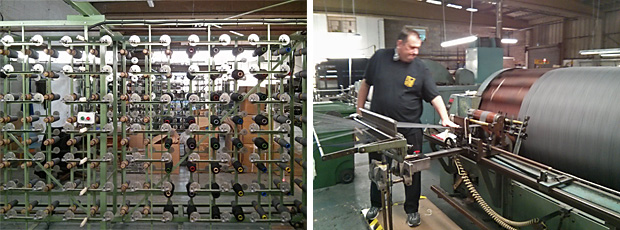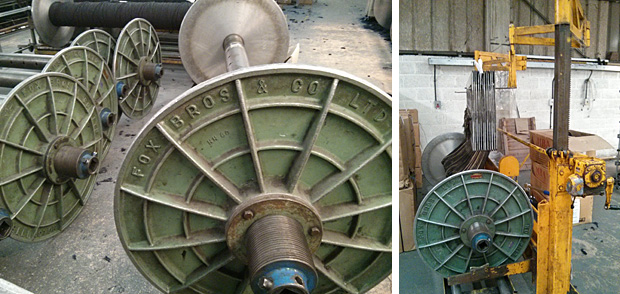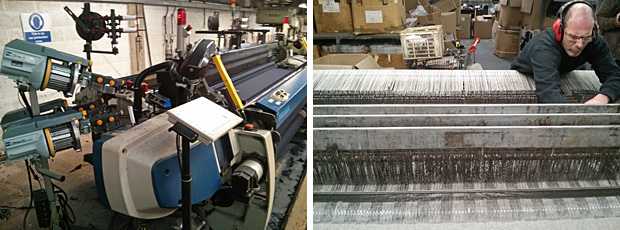At our first visit to the Somerset Heritage Textile Collection, Estelle, the Textile Curator, mentioned that they had a collection from the Quantock Weavers. Intrigued, I arranged to come back and see it, and was completely bowled over by the beautiful work.
Firstly there were boxes of woven textiles, tablemats, table-runners, scarves and shawls, all unique. On asking about the weavers Bethan brought in a box of stones and Estelle produced a booklet ‘Woven from a Stone’ by Hubert Fox that gives a short, life-history of the weavers.
The Quantock Weavers were Gladys Dickinson and Norah Biddulph, they set up business together in 1932, both aged 47, at the Old Forge in Over Stowey close to the Quantock Hills in Somerset. They spun, wove and bottled fruit (including whortleberries, which they sold in London to Fortnum and Mason, and Harrods); gradually devoting more time to the spinning and weaving.
“Local wool was bought from the farmers for spinning into yarn. Natural dyes were used. They were obtained from heather, gorse, bracken, and broom in the hills, from leaves, flowers, and brambles in the lanes, and from lichen on apple trees and boulders. The humble galvanised bucket was used as a dye vat.”
Fox, H. ‘Woven from a Stone’
In 1956 an artist friend gave Gladys and Norah an olive green, red and silver serpentine stone from Cornwall. The ladies matched the colours with natural dyes and wove a curtain with the shades and pattern of the stone. This was to be the first of many stones that would arrive from all over the world in little wedding cake boxes to be turned into patterns on the loom.
Both Gladys and Nora had come from comfortable backgrounds in London and Ireland, respectively, and had then been plunged into poverty after World War I and the deaths of their fathers. They were both very resourceful women: Gladys had run her father’s farm during the war, including hand-shearing her and her neighbours’ sheep, and then worked for the ‘Women’s Guild of Empire’; Norah staying with her sister in Egypt got a job at Bourg-el-Arab in the Libyan Desert where Bedouin women were being taught to spin and weave, and on returning home after the British left Egypt in 1924, went to Sweden to learn more, taking courses in spinning and weaving. They met in Somerset where Norah had started a job spinning, weaving and bottling fruit with an acquaintance in Washford.
It was fun matching the stones to the woven pieces; above is a piece of granite with lichen matched to a small placemat. The Quantock Weavers use a very simple, but time-consuming, inlay technique to weave their patterns, similar to tapestry. They were very skilled at choosing neutral warps, in this case a mid-green that blends well into the grey and the bright lime, lichen colour. To show the inlay all the pieces are designed to be weft-facing.
A larger placemat matched to a larger piece of slate. Here they have used inlay again but predominately they have simplified the weaving by using just two colours, one at either side of each weft row or pick.
It was quite hard to work out what each piece was designed for; the archive pieces were mostly all similar weights but there was one much finer piece. The above piece was larger, approximately one metre long, I am guessing a large tablemat/tablecloth …
Brilliant colours from natural dyes: definitely a scarf or stole above on the left, on the right lovely; delicate hand-stitching on the back of a tablemat.
The one piece that was not plain weave – a point draft 2:2 twill, again a large tablemat/table cloth?
Again the same for the above pink piece that I have linked to a piece of gypsum (Note: the types of stones may not be accurate, there were quite a few question marks on the different labels).
The last two pieces are small tablemats linked to stones that both may be onyx, however the stones seem to have very different textures. I love the use of a dull pinky-purple, putty colour with the vibrant lime greens and oranges.

